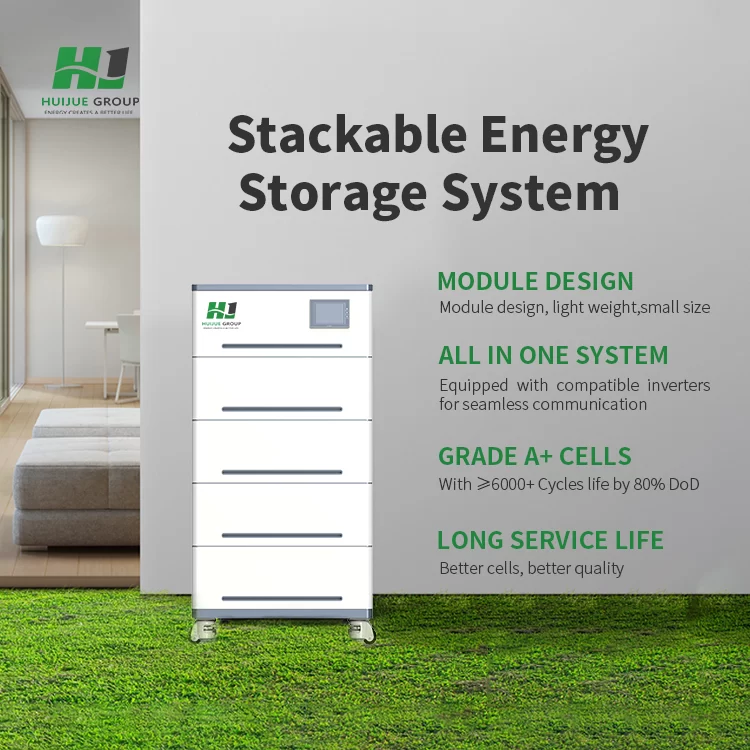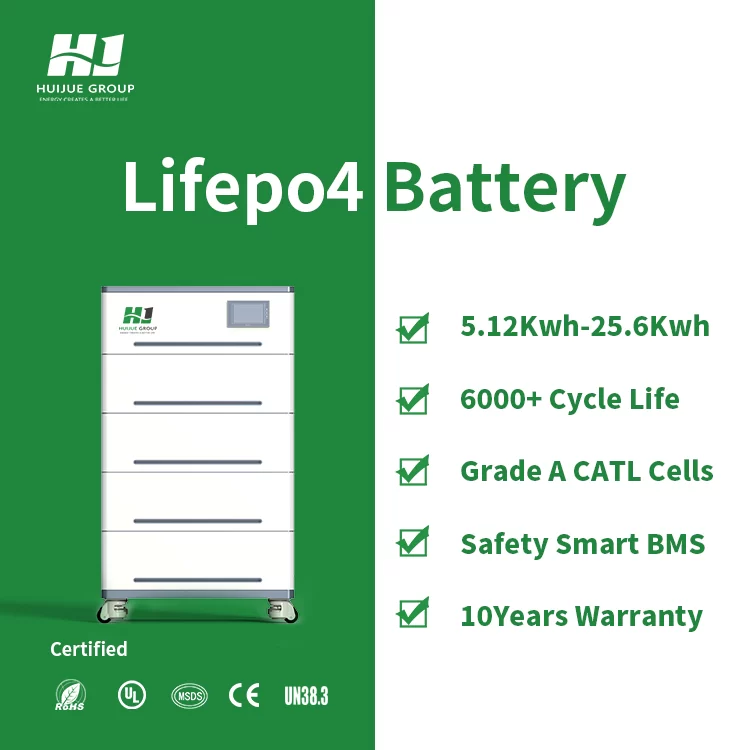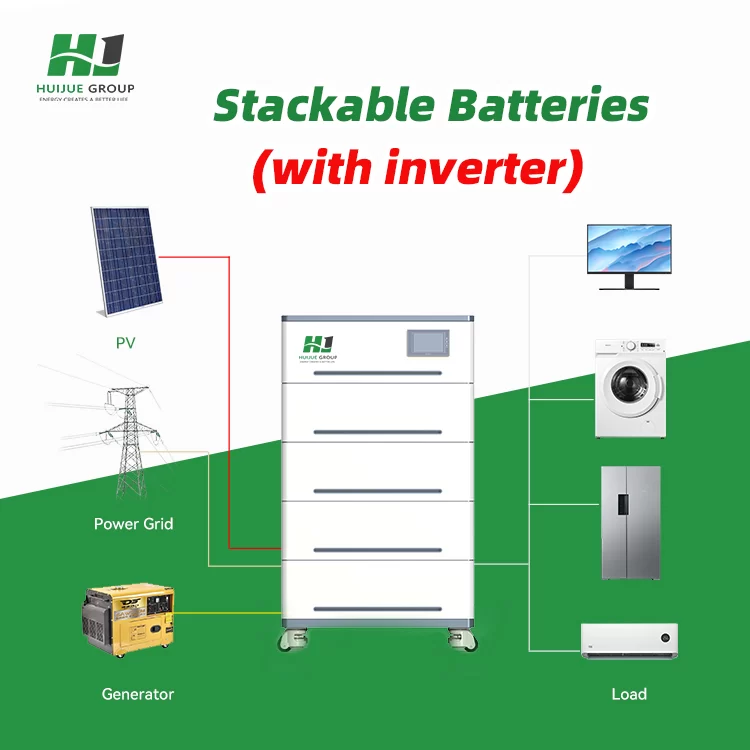Incredible Benefits of Stackable Energy Storage Systems

Stackable energy storage systems offer unparalleled scalability, flexibility, and reliability, making them ideal for diverse applications.

Understanding Stackable Energy Storage Systems
Stackable energy storage systems represent a revolutionary approach to energy management, allowing users to tailor their storage solutions according to specific needs. Built on the principle of modularity, individual units can be stacked or combined to achieve the desired capacity. This flexibility is particularly beneficial in an era where energy demands fluctuate, and the need for efficient energy storage solutions is more pressing than ever.
The Need for Stackable Energy Storage Solutions
With the world's energy demands constantly increasing, the need for innovative and efficient storage solutions has never been greater. Stackable energy storage systems address this need by offering a flexible and scalable solution. Whether for residential, commercial, or industrial use, these systems can be easily expanded or reduced based on the energy requirements, making them a versatile choice for various settings.
How Stackable Energy Storage Systems Work
Stackable energy storage systems operate on a simple yet effective principle: modularity. Each system comprises multiple modules, which can be added or removed to adjust the total energy storage capacity. This modular design not only provides flexibility but also simplifies installation and maintenance. By connecting multiple modules, users can create a storage system that precisely matches their energy needs.
Types of Stackable Energy Storage Systems
- Battery-Based Systems: These are the most common, utilizing various battery chemistries like lithium-ion, lead-acid, or flow batteries.
- Thermal Storage Systems: Store energy in the form of heat, useful for heating and cooling applications.
- Mechanical Storage Solutions: Includes flywheels and compressed air energy storage, though less commonly used in stackable configurations.
Key Components of a Stackable Energy Storage System
The key components of a stackable energy storage system include stackable battery modules, inverters, and control systems. The battery modules are the primary storage units, designed to be connected in series or parallel to achieve the desired capacity. Inverters convert the stored DC power to AC power, making it usable for household or industrial applications. Control systems manage the flow of energy, ensuring the system operates efficiently and safely.
Materials Used in Stackable Energy Storage Systems
The materials used in constructing stackable energy storage systems are critical to their performance and longevity. High-performance materials like advanced alloys and composites provide strength and durability, while sustainable materials, including recycled metals and plastics, minimize environmental impact. Insulation materials maintain the optimal temperature within the system and protect against external factors.

Advantages of Stackable Energy Storage Systems
Stackable energy storage systems offer numerous advantages over traditional storage solutions:
- Scalability: Users can adjust their storage capacity as their energy needs change.
- Ease of Installation: Each module can be easily added or removed without disrupting the entire system.
- Customization: Suitable for a wide range of applications, from small residential setups to large industrial installations.
Challenges in Implementing Stackable Energy Storage Systems
Despite their many benefits, stackable energy storage systems face several challenges:
- Technical Challenges: Ensuring compatibility between different modules and optimizing system efficiency can be significant hurdles.
- Economic Considerations: The initial cost of the modules and the return on investment are critical factors that need to be addressed.
Applications and Future Trends
Stackable Energy Storage in Residential Settings
In residential settings, stackable energy storage systems provide an effective solution for home energy backup and integration with smart home systems. They can store excess energy generated by rooftop solar panels, providing a reliable power supply during outages or peak demand periods. By integrating with smart home systems, these storage solutions can optimize energy use, reducing utility costs and enhancing the home's energy efficiency.
Stackable Energy Storage in Commercial and Industrial Applications
Commercial and industrial facilities can greatly benefit from stackable energy storage systems. These systems can help businesses manage their energy consumption more effectively, providing solutions for peak shaving and load leveling. By storing energy during off-peak hours and using it during peak demand, companies can reduce their energy costs and minimize their impact on the grid.
Emerging Technologies in Stackable Energy Storage Systems
The field of stackable energy storage is continuously evolving, with new technologies emerging to improve efficiency and safety. Solid-state batteries offer higher energy density and safety compared to traditional lithium-ion batteries. Advanced control systems, incorporating artificial intelligence and machine learning, are also being developed to optimize energy management and predict maintenance needs.
Environmental Impact of Stackable Energy Storage Systems
While stackable energy storage systems offer numerous benefits, it's essential to consider their environmental impact. Advances in battery technology and materials are helping to mitigate these impacts, with many systems designed for easy recycling and minimal environmental footprint.
Cost Considerations and Economic Benefits
The cost of stackable energy storage systems can vary widely depending on the technology and capacity. While the initial investment can be substantial, the long-term savings in energy costs and potential government incentives can offset these costs. Assessing the return on investment and understanding the total cost of ownership are critical when evaluating different energy storage solutions.

Application of Huijue Home Energy Storage System
Our stackable home energy storage system, suitable for both residential and commercial settings, offers efficient energy storage solutions. Featuring central control and real-time monitoring, our system ensures reliable energy management without the need for constant oversight.
Product Specifications
- Battery Model: Available in models HJD-HSSH-SM01 to SM03
- Battery Type: Lithium iron phosphate battery
- Battery Capacity: Ranging from 200Ah to 400Ah
- Rated Voltage: 96Vdc to 192Vdc
- Parallel Quantity: 2 to 4
- Cycle Life: ≥2000 times @ 80%DOD @ 25℃
- Display: LCD/LED (optional)
- Installation Method: Stacked
- Protection Level: IP55
Conclusion
Stackable energy storage systems are a versatile and efficient solution for modern energy management. They offer numerous benefits, including scalability, flexibility, and reliability, making them ideal for diverse applications.
FAQs on Stackable Energy Storage Systems
1. What are the benefits of stackable energy storage systems?
Stackable energy storage systems offer unparalleled scalability, flexibility, and reliability. They allow users to customize their storage capacity, accommodate fluctuating energy demands, and seamlessly integrate with renewable energy sources.
2. How do stackable energy storage systems work?
These systems operate on modularity, where individual units can be added or removed to adjust the total storage capacity. This design simplifies installation and maintenance, allowing users to tailor the system according to their specific energy needs.
3. What types of batteries are used in stackable energy storage systems?
Common battery types include lithium-ion, lead-acid, and flow batteries. The choice of battery depends on the application, required capacity, and performance characteristics.
4. How much do stackable energy storage systems cost?
The cost varies based on the technology, capacity, and manufacturer. While the initial investment may be significant, long-term savings in energy costs and potential government incentives can offset these costs.
5. Can stackable energy storage systems be used with any type of renewable energy source?
Absolutely, they are designed to integrate seamlessly with various renewable energy sources, including solar and wind, enhancing grid stability and maximizing renewable energy utilization.
6. What should be considered when comparing stackable energy storage systems?
Factors like performance metrics, cost, manufacturer reputation, and compliance with regulatory standards should be evaluated to select a system that best fits the user's needs and budget.
